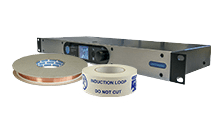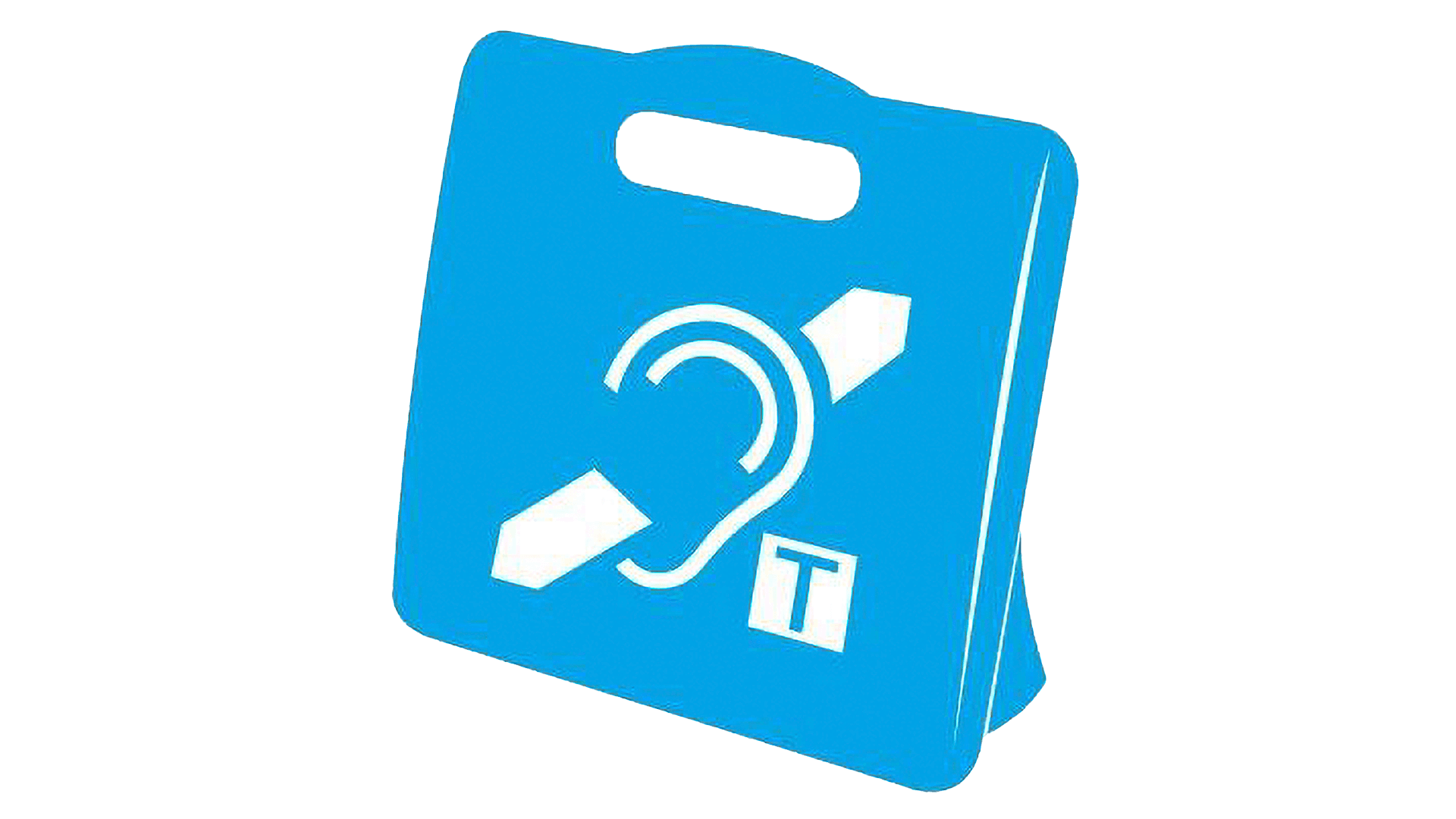Ampetronic do not manufacture or sell portable counter loops, to understand why please read the following information:
Portable/desktop counter loops are not suitable for retail counters, point of sale areas or reception desks and will provide a poor experience for the hearing aid user and often require them to identify themselves as having hearing loss, which limits the non-discriminatory nature of hearing loop technology. Fixed counter loops are the correct solution for these applications.
When used correctly portable hearing loops are suitable for a limited number of applications, such as meeting rooms or across desks for short conversations where all parties know that the system needs to be present, turned on, pointing in the right direction, charged and fully operational.
When used incorrectly portable induction loops, particularly when utilised for retail counters, lead to a frustrating experience for the hearing aid user who they are intended to help and tarnish the reputation of the technology and the retail operator.
Unfortunately, and for reasons that can be hard to avoid, it is very common to find portable loops misused in retail or customer service environments. For this reason, Ampetronic strongly recommends the use of fixed installation loop systems such as our CLD series, and does not supply or promote portable systems.
Before purchasing a portable counter hearing loop please consider the application for which you intend to use it. A portable induction loop may save some money in initial expenditure but will ultimately cost more in the long term due to lack of use of the investment and the valuable customer base that may seek working assistive listening solutions elsewhere.
To use a portable hearing loop in a retail environment requires meticulous training of all customer facing staff with regard to operating, charging, testing, positioning, maintaining the loop system and ensuring that the ‘auto cut-off’ battery protection feature has been deactivated (most of which can be avoided by the use of a fixed loop system).
A lack of staff training often leads to portable loops being unplugged to make use of the power outlet and simply put away because no one know what they do or if they even work (unless you have a hearing aid or a loop tester, a hearing loop is silent and the signal invisible).
Portable induction loops also often feature an omnidirectional microphone which is built in to the loop housing. As an omni-directional microphone is designed to pick up all the sound in the localised area, and the fact that the loop system is generally located several feet away from the member of staff whose voice should be captured, the signal transmitted to the user often has less clarity than the hearing aid cannot achieve on it’s own.
If a hearing loop facility is advertised by the hearing loop sign at a service point, then the system must be available without the intended user having to identify themselves and ask to use the service.
Communication may be very difficult depending on the customers level of hearing loss (that’s why the hearing loop is required in the first place), and most prospective customers will simply leave without asking or complaining if the loop service isn’t working.
Product Code: NOT APPLICABLE
To be suitable for use at a retail counter or desk a loop system should fulfil the following characteristics:
- Be turned on at all times and powered by the mains, preferably wired into the same circuit as the cash machine to ensure it is powered on each morning.Portable loops often require charging and have an auto shut-off feature after 10 to 60 mins to protect the battery life which makes them unsuitable.
- Be located in a fixed position where the magnetic field produced by the loop has been calculated and tested to be compliant with the EN601118-4 standard for comfortable use by the hearing aid wearer. Due to their portable nature, portable desk loops cannot adhere to this standard. They are often moved by untrained staff and left facing in the wrong direction, placed at an unsuitable height or adjusted to produce the wrong signal strength. The EN60118-4 / IEC 600118-4 standard is a measurement of the signal produced by a system, so no single component of the system (such as a portable loop) can claim to be 60118-4 compliant without being installed and commissioned.
- Be available at all desks where the international hearing loop sign is located.The loop sign should not be used unless the service is permanently available without being asked for. If one portable counter loop has been purchased to cover several counters or payment points then this is not a suitable solution and will alienate the people the service is intended to help.
- Use an external directional microphone if required for a busy, noisy environment, that should be located as close to the intended sound source (the member of staff’s mouth) as possible so as not to capture any unwanted background noise.Portable counter loops often have an omni-directional microphone installed within the unit, when the unit is placed several feet away from the intended sound source the microphone picks up all the noise in the localised area and transfers it to the loop amplifier. This provides no advantage over what the user’s hearing aid can do without the loop system.
Ampetronic recommends the use of fixed counter loop systems for retail and reception applications such as the CLD1 product range.




